DMM Mastech MS8211 (Aimo)

This is a pen style DMM with voltage, ohms and current.
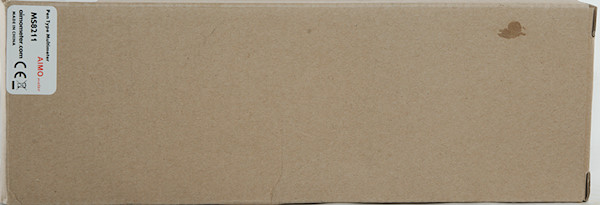

The meter arrived in a neutral brown cardboard box.

Inside the box was a pouch.
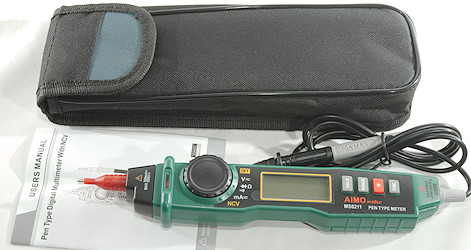
In the pouch was the meter and a manual.
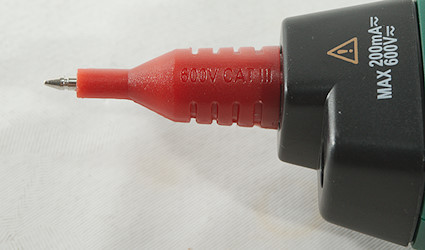
The pen probe has the usual tip cover with a 600V CAT III rating.
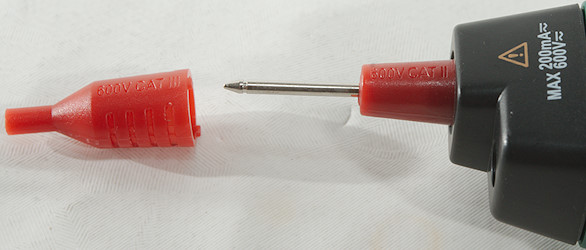
Without the cover the rating is 600V CAT II



The negative probe is similar with cover and ratings.

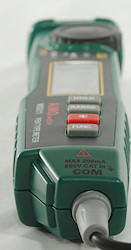
Both probes are part of the meter and cannot be replaced.
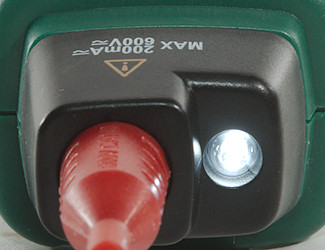
At the front is a flashlight led.





There is two AAA batteries in the meter.
Display
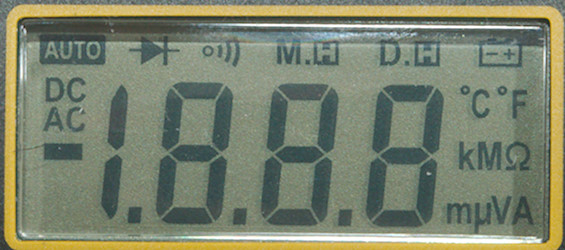
The above picture shows all the segments on the display, not all are used.
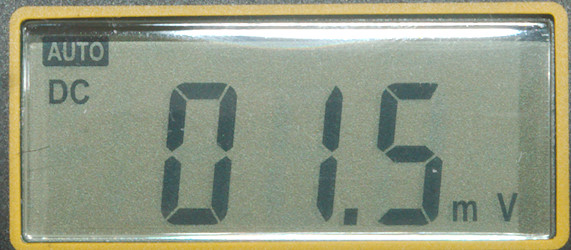
Typical display during usage, it will show the number and what measurement is selected.
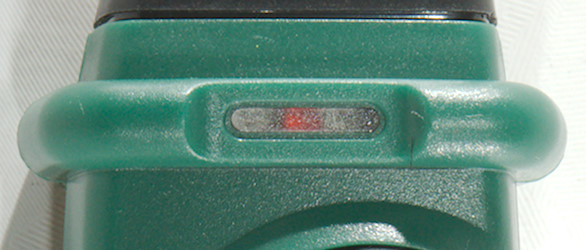
NCV is shown on this led, not on the display.
Functions
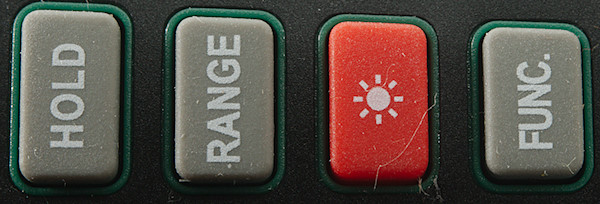
Buttons:
- Hold: Freezes the display reading.
- RANGE: Press to select manual range, press again to change range, hold down to return to automatic range. This button must be used for AC mV.
 : Hold down to turn backlight and flashlight on.
: Hold down to turn backlight and flashlight on.
- Func: Select between AC and DC, ohm, diode and continuity.
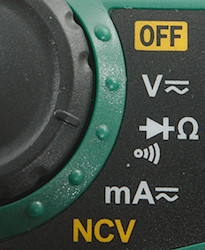
Rotary switch:
- Off: Meter is off
- V: Voltage DC and AC, use FUNC to select AC and for mV AC the RANGE button must be used.
 : Resistance, diode and continuity.
: Resistance, diode and continuity.
- mA: mA range for DC and AC
- NCV: Non contact voltage, will use the buzzer and the red led, the display will be in AC voltage mode.
Input
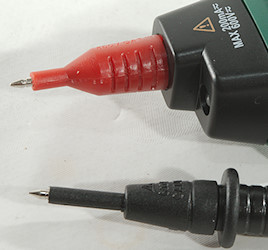
The probes is integrated in the meter.
Measurements
- Volt and frequency
- 1 VAC is 5% down at 2kHz
- mV AC can only be selected manually
- Input impedance is 9 to 10Mohm on DC and AC
- mV DC range is 100Mohm input impedance up to about 1.8V, then it drops to 10Mohm
- The specifications says it is protected to 600V DC/AC
- Current
- There is audible alarm when current is above 200mA
- Current is protected by a 0.25A/250V 5x20mm fuse that is soldered to the circuit board.
- Ohm, Continuity, diode and capacitance
- Ohm needs about 3.5s to measure 100ohm
- Ohm is 0.44V open and 0.24mA shorted
- Continuity is moderate speed (About 140ms).
- Continuity beeps when resistance is below 33ohm
- Continuity is 0.44V open and 0.24mA shorted
- Diode range uses 1.6V, max. display is 0.999V at 0.28mA, max. current is 0.77mA shorted
- The specifications says it is protected to 600V DC/AC
- Miscellaneous
- Current consumption of meter is 1mA in VDC and ohm and 1.7mA in AC and current, NCV uses 2.2mA. With flashlight+backlight the maximum current is 11mA
- Meter works down to 1.4V where display starts to fade, meter turns off at 1.1V, battery symbol show at 2.4V.
- Reading is stable down to about 1.6V, below the readings goes slightly down.
- The meter usual need a few display update to reach the final value.
- Viewing angle is good, except from the top.
- Display updates around 3 times/sec
- Backlight and flashlight will automatic turn off after 15 seconds.
- Will automatic turn power off in about 15 minutes.
- Weight is 155g with batteries.
- Size is 250 x 41.7 x 33.3mm.
- Probes
- Probe wire is fairly soft and 82cm long.
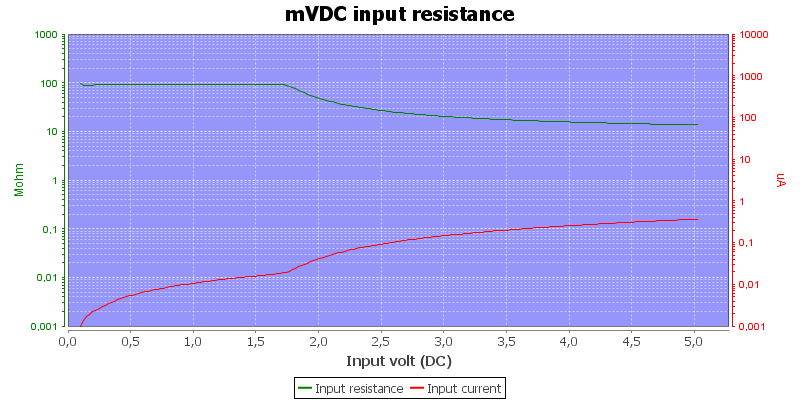
Input impedance in mV DC range.

DC voltages in AC ranges can confuse the meter when measuring low AC volts.
Tear down
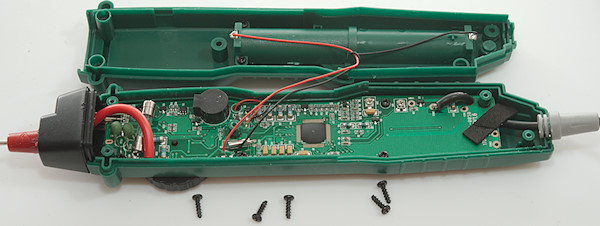
There where 5 screws to open the meter.


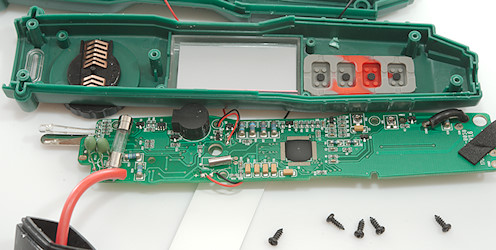
And 5 more to get the circuit board out.


The current shunt (R28: 1ohm) is at the back of the meter, below the black wire with a two diodes across (D5) and the protection fuse is at the front soldered to the circuit board. The voltage input uses PTC2 and two resistors (R20 & R21: 2x5Mohm) and goes directly to the main chip. The NCV circuit (U2 & Q5) is independent and uses a lot of high ohm resistors (Marked 476 i.e. 47Kohm).
Ohm uses PTC2 for current output, after the PTC it goes directly to the reference resistors (R15..R19) that uses Q1 for protection. For sense input PTC1 goes to a small SMD resistor (R14: 900kOhm) and then to the chip.
Some of the capacitors (C10..C14) is used in a charge pump for the LCD display, it generates 4.5V from the internal +/- 1.5V supply.

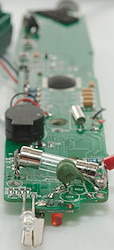



This side has the pads for LCD, buttons and rotary switch, together with the NCV diode an antenna.

Conclusion
With a 250V fuse the meter do not live up to a 600V CAT rating, but safety looks acceptable for occasion home mains work.
The fuse is not easy to replace.
It is a fairly limited 2000 count meter and a bit on the slow side, but it works fine for checking voltage, resistance and continuity.
Notes
How do I review a DMM
More DMM reviews
Multimeter design, this explains a lot more about DMM's than my tear-downs
 : Hold down to turn backlight and flashlight on.
: Hold down to turn backlight and flashlight on.






















 : Hold down to turn backlight and flashlight on.
: Hold down to turn backlight and flashlight on.

 : Resistance, diode and continuity.
: Resistance, diode and continuity.














